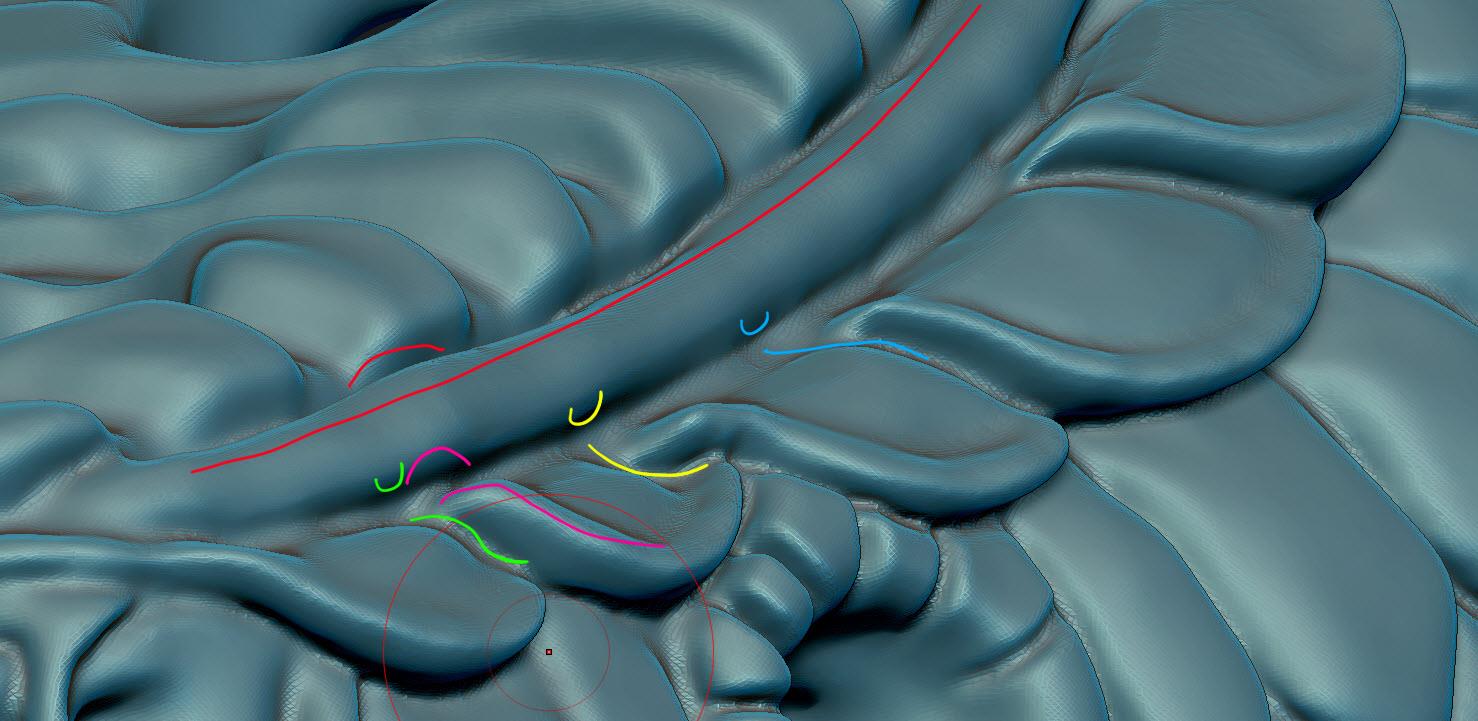I would like a stroke that used a moving average for the position, where small blips in the surface position would not be weighted as much as it is when using just with the average position from the sample radius. Does anyone know how to achieve this?
When I use a cutter like SKSlash, it does not cut an even channel as you see from the non-red lines. Wherever there was a high spot, the channel has a high spot. Also, when I use ClayBuildup, it goes up and down with the immediate surface below it.
In relatively flat areas, I can increase the brush sample radius to 2 and the position to 2 and achieve this effect. But in busy areas like a channel, the wide radius of the sampling causes the stroke to be at the wrong position. If there were a moving average, then the sample radius could be small and just sample the channel while letting the noise have little impact.
Attachments


